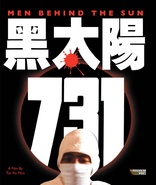Men Behind the Sun Blu-ray Movie
HomeMen Behind the Sun Blu-ray Movie 
Man Behind the Sun / Hēi tài yáng 731 / 黑太陽731Massacre Video | 1988 | 105 min | Unrated | Dec 19, 2023
Movie rating
6.4 | / 10 |
Blu-ray rating
| Users | 0.0 | |
| Reviewer | 3.0 | |
| Overall | 3.0 |
Overview
Men Behind the Sun (1988)
Story of a terror camp in the end of WW2. Japanese troops round up Chinese and Russian prisoners of war and take them to a place called Squadron 731, where they are grotesquely tortured and experimented on to test new biological weapons...
Starring: Hsu Gou, Tie Long Jin, Zhaohua Mei, Zhe Quan, Gang Wang (XXIX)Director: Tun-Fei Mou
| Foreign | Uncertain |
| Horror | Uncertain |
| War | Uncertain |
| Drama | Uncertain |
| History | Uncertain |
Specifications
Video
Video codec: MPEG-4 AVC
Video resolution: 1080p
Aspect ratio: 1.85:1
Original aspect ratio: 1.85:1
Audio
Mandarin: LPCM 2.0
English: LPCM 2.0
Japanese: LPCM 2.0
Subtitles
English
Discs
Blu-ray Disc
Single disc (1 BD)
Playback
Region A (B, C untested)
Review
Rating summary
| Movie | 3.0 | |
| Video | 3.5 | |
| Audio | 3.0 | |
| Extras | 3.5 | |
| Overall | 3.0 |
Men Behind the Sun Blu-ray Movie Review
Reviewed by Justin Dekker January 25, 2024The notorious 'Men Behind the Sun' makes its Blu-ray debut courtesy of Massacre Video. It has received a 4K restoration from the original 35mm camera negative, new English subtitles, and is accompanied by an interesting conversation with the director along with other extras. A slipcase is also included, and there is interior art of one of the film's memorable torture scenes that is "hidden" by the black case.
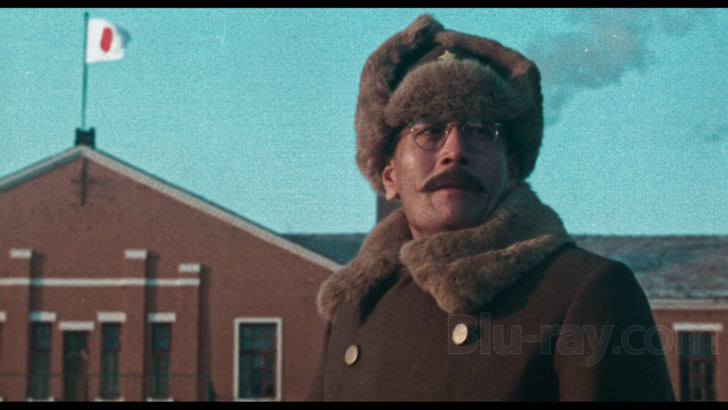
As Men Behind the Sun informs us, prior to the second world war, the Japanese miliatry occupied northeast China and set up a puppet state called Manchoukou. It is here that bacterial weapons were created by the Manchu 731 Squadron. In early 1945 as events were going poorly for the Japanese, so their plan was to install a new leader for the 731, replace the existing rank and file with new, young recruits, and develop a weapon that would turn the tide and win the war. Their plan, it seems, is to have rats and fleas infected with the Black Death Virus spread this biological weapon to the enemy troops. The main problem is the delivery system as most conventional methods seem to destroy much of the payload before it can reach its intended target. A happy accident, though, seems to solve the problem. As the film closes, we receive a large amount of text that explains what happened after the film ended, focused mainly on the commander, Ishii, and the fallout from the work done by Unit 731.
It is not until the 30-minute mark that the gross-out factor comes into play, but from that moment on it is always with us. A corpse is splayed open before us as researchers talk about the impact of the Black Death Virus, a woman is tied to a post in the freezing cold as water is poured over her hands and they are beaten. Later the skin is violently peeled from her hands and forearms. A man has his hands dipped in liquid nitrogen and then his fingers are shattered. More and more tortures await, some more mundane, others, like the decompression chamber are unique and disturbing. I'm not a doctor or a top-secret government researcher, but I seriously question the relevance of the tortures portrayed in the film with the stated goal of creating a bioweapon.
The film's most extreme scenes consist of an apparent vivisection of a young boy that the director T. F. Mou contends was staged with the use of footage from an actual autopsy. Based on what I observed I wouldn't doubt it as it's some of the most gruesome footage I've seen. Even though other films like 1968's Castle of the Creeping Flesh inserted footage from an actual heart surgery to up the ante a bit and stand out from the crowded horror field, what we are presented with here is much more difficult to watch due to the length of time the scene lasts and the mean-spirited nature of its presentation. With regard to the animal cruelty scene, which I am never in favor of, the director has gone on record addressing how the scene was accomplished, and that although it looks realistic and horrible, the animal in question was not harmed and was in fact given a treat at the end of the day's filming.
The film is based in historical fact. There was a Unit 731 that did engage in this type of research. Mou states that when he first learned of 731, it was largely still just rumored, but the Japanese government finally admitted its existence and in the late 1990s, and more details of it's alleged atrocities have emerged over time. Over 3,000 Chinese and Korean prisoners tragically fell victim to their inhuman experiments. Despite that, it would be somewhat unreasonable to look at this film purely as a "war movie" or a "historical drama". Too often it devolves into thoroughly exploitative moments that are far more graphic than what is needed to convey the message. The film actually revels in them. The camera routinely lingers too long and zooms in too close to realistically be passed off as educational or a historical document. But that isn't to say that it can be ignored or dismissed as a simple work of exploitation. It's a complicated project that brings an inhuman and largely unknown part of human history to light.
Men Behind the Sun is a film that I knew only by reputation, and despite my love of horror and exploitation films, it's not one that I ever sought out. While it sounded boundary-pushing (and it is), it just didn't quite sound appealing, and other films filled my days and nights. As a put the disc in, I did my best to eject whatever prejudices and preconceived notions I had about the film and give it as fair a shot as I could. On the whole, the film is well-crafted. And while there are some moments that are genuinely disturbing, it was not as wince-inducing or stomach-churning as I was prepared for it to be. Maybe I bought too much into the "legend" of the thing and built it up to be worse than it is, or maybe I've seen too much horror and enough medical dramas so that the scenes depicted had a somewhat muted impact. Whatever the case may be, it didn't hit me as hard as I thought it would. I'm not sure if that's good or bad. It's definitely unsettling, and I will say that certain moments will stick with me longer than I would like them to. Much longer, I'm afraid.
Men Behind the Sun Blu-ray Movie, Video Quality 
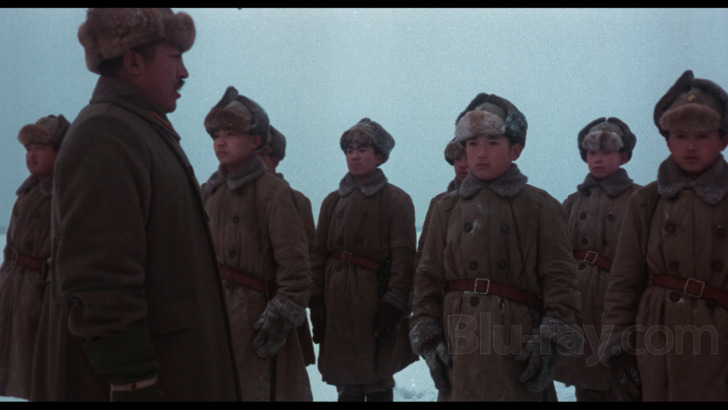
The packaging states that Men Behind the Sun is the product of a new 4K scan from the original 35mm camera negatives. A Twitter (now
"X") post from Massacre Video on June 13, 2023, indicates the specifics of the challenges faced bringing this film to disc and the work that was done:
-
When we embarked on the restoration journey, we encountered a major hurdle in the form of the provided 4K scan. It was one of the roughest
scans we had ever seen, plagued by significant stabilization issues. Despite our best efforts, we were unable to obtain another scan as the licensor
was content with the Hong Kong restoration.
To compound matters, the Hong Kong restoration employed a forced stabilization technique, resulting in the removal of approximately 15% of the image on the top, bottom, and sides. Additionally proper color correction was lacking.
Another of the initial obstacles we encountered was that the original scan was not performed at the requested bit-depth. Although it was scanned in 4K resolution, the scan quality fell short of the standard required for a proper UHD disc. We attempted an HDR10 color correction, but due to the scan's limitations, it was not possible to achieve the desired result for an ideal UHD release. However, we want to assure you that for the Blu-ray release, the scan quality is more than sufficient and provides a significant improvement over previous versions.
Undeterred by these challenges, we enlisted the help of three different artists, each striving to rectify the stabilization issues. Unfortunately, despite their valiant attempts, a complete resolution of the problem remained elusive. However, our commitment to delivering the best possible version of Men Behind the Sun remained unwavering.
After an extensive search, we were fortunate to find an incredibly talented artist who possessed the skills and determination required for this intricate task. Every scene of the film underwent meticulous manual stabilization, resulting in a significant improvement over the source material. While perfection may still elude us, we firmly believe that this version captures the essence of Men Behind the Sun in a way that hasn't been achieved before.[sic]
With these caveats in mind, it is remarkable that the film looks as good as it does. However, despite the Herculean body of work laid out above, the image is not perfect. White specks are a persistent and constant offender. Fine grain is present, and in most situations is handled and resolved well enough. However, there are instances where it noisily swarms over the image and is quite distracting. Film damage is also present from time to time as is the odd missing frame. While the image is capable of delivering some fine detail with regard to fine facial lines, hair, clothing textures, and surface particulars in brickwork, it does so at a level below what I what I was hoping for. Softness can also be an intermittent issue with shots featuring text providing a location or date stamp for the scene typically faring the worst. And unfortunately, given the work performed, image instability is still an occasional issue as well. Skin tones are usually acceptable though blacks can crush detail on occasion as well. What we have here is a film that is perfectly watchable as long as expectations are kept in check, it's just not the pristine image that some may have been hoping for.
Men Behind the Sun Blu-ray Movie, Audio Quality 
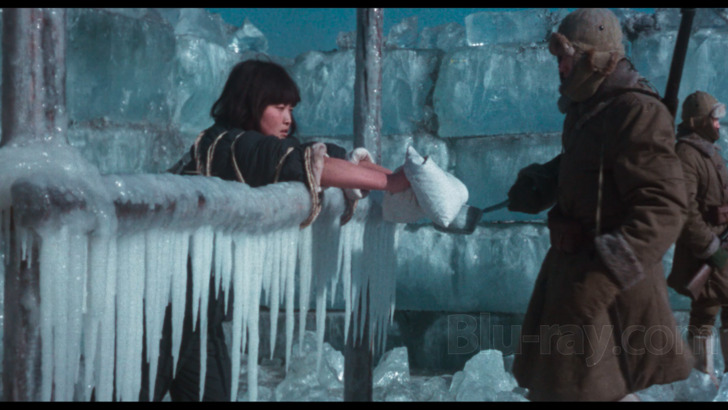
Men Behind the Sun comes with three 2.0 audio options, Mandarin, English, and Japanese. I watched the entirety of the film in Mandarin with the English subtitles, and then the first 40 minutes or so with the English dub. While I found the English dub to be reasonable enough, and the voice actors did a solid enough job without overacting or getting "hammy", I found I enjoyed the Mandarin track with the English subs a bit more. The Mandarin track kept the dialogue front and center as appropriate. It was delivered cleanly enough for the most part, but some small distortion could creep in during moments of intense screaming. Gunshots and footfalls sound convincing enough, as do other sound effects, within the context and confines of the track.
Men Behind the Sun Blu-ray Movie, Special Features and Extras 
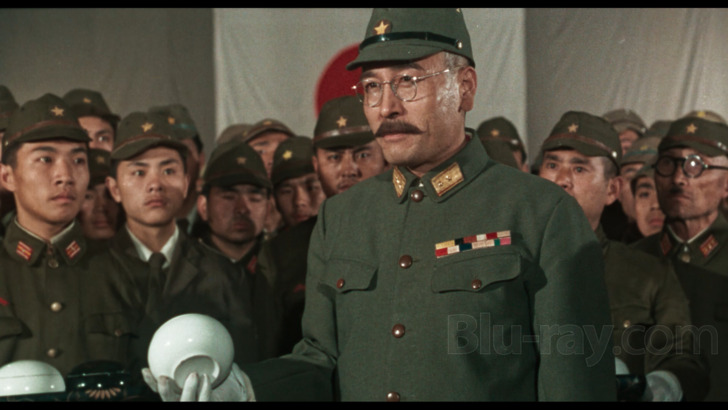
The special features included on the disc are as follows:
Men Behind the Sun Blu-ray Movie, Overall Score and Recommendation 
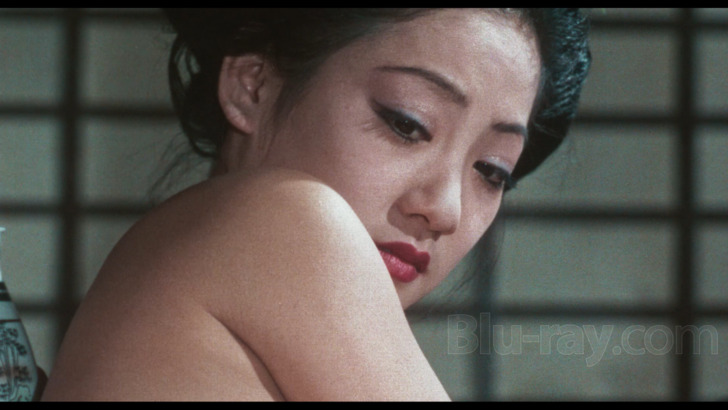
Men Behind the Sun has its fans, and while I'm certain they are saddened by the film elements not being in good enough condition to allow for a 4K release, they should be pleased with the results here. While not perfect, it's likely the best presentation of the film we're going to get. The film isn't for everyone. Even though it may be historically accurate and illuminating in some regard, the frequently gruesome moments can prove to be an endurance test. The conversation with Mou is enlightening and laid-back and does a great job of providing the history of the project and puts some fears to rest about how certain things in the film were accomplished. Grim, gritty, and dark, Men Behind the Sun is recommended to its fans. All others should proceed with caution.
Similar titles
Similar titles you might also like

Men Behind the Sun 2: Laboratory of the Devil
Hēi tài yáng 731 xù jí shā rén gōng chǎng / 黑太陽731系列:殺人工廠
1992

Raw
Grave
2016

The Gestapo's Last Orgy
L'ultima orgia del III Reich / Last Orgy of the Third Reich / Caligula Reincarnated as Hitler
1977

The Beast in Heat
La bestia in calore / SS Hell Camp
1977

SS Experiment Love Camp 4K
Lager SSadis Kastrat Kommandantur
1976

Evil Dead Trap
Shiryô no wana
1988

In a Glass Cage
Tras el cristal
1986

Embodiment of Evil
Encarnação do Demônio
2008

The Sadness 4K
哭悲 / Ku bei | Includes Clearwater and Fiendish Funnies | Slip on retailer press
2021

Zombie 4K
Zombi 2 / Zombie Flesh Eaters
1979

City of Life and Death
南京!南京! / Nanjing! Nanjing!
2009

Don't Deliver Us from Evil
Standard Edition
1971

Nosferatu
Nosferatu, a Symphony of Horror | Nosferatu, eine Symphonie des Grauens | 2006 Restoration, Hans Erdmann/Heller compilation score
1922

Audition
オーディション | Ôdishon | Special Edition
1999

Neurosis
Revenge in the House of Usher / El hundimiento de la casa Usher
1983

The Devils
1971

It's Not Good for a Man to Be Alone
No es bueno que el hombre esté solo
1973

Seven Women for Satan
Les week-ends maléfiques du Comte Zaroff
1976

Emma Puertas Oscuras
1974

Ilsa: She Wolf of the SS 4K
Kino Cult #37
1975
